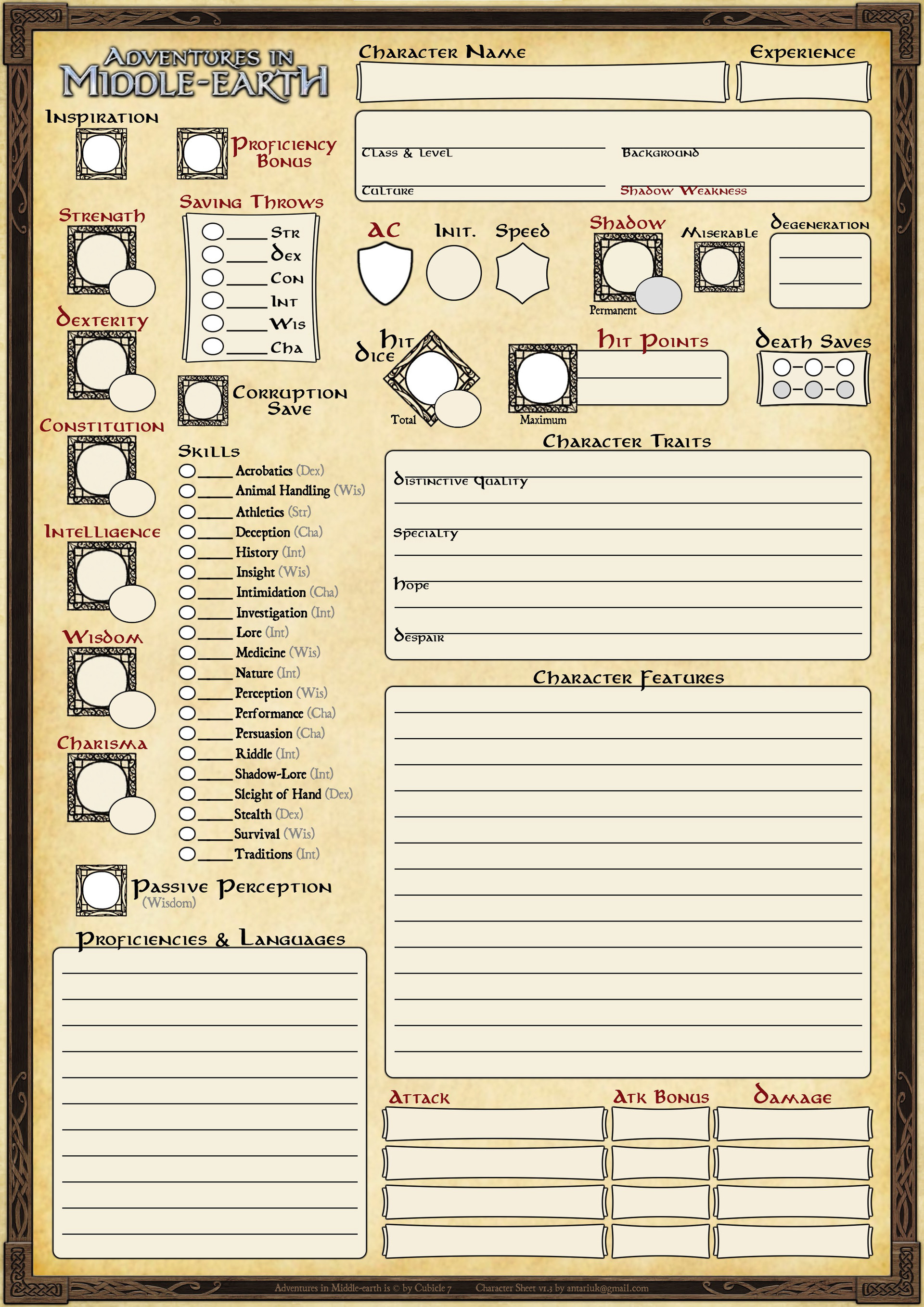
Experience points or XP tell you how close you are to your next level - if you’ve any experience with almost any CRPG you should be familiar with the concept.ĭown the left side of the page are the six primary stats that define your character, also called attribute or ability scores: Strength, Dexterity, Constitution, Intelligence, Wisdom and Charisma. Your character’s name, race, class, level and who is playing that character can all be found here, along with alignment (your character’s ethical and moral outlook) and experience points.

The standard 5e Character Sheet is organized with some crucial but basic information at the top of the page. We’re going to go over the basics of a character sheet and talk about what they provide and where. D&D is hardly unique in having them, and they all tend towards a certain kind of organization - the most common, most frequently needed information is listed up front, with additional pages available if you really need to write your entire character’s backstory and every single item in their inventory down somewhere. However, since D&D has its roots in tabletop play (even if you’re playing it in Discord with a dice bot because your players all live in a different part of the world oh hey how did this link to our D&D stream get here) you’ll need a place to keep track of the things your character can actually do - the spells and abilities and skills and equipment and stats that makes Grogthar the Bloodbather different and distinct from Floriathar, Chosen of the Dawn. That character is your avatar in the game world, in much the same way as the character you play in a video game represents you and your choices without actually being you.

Playing Dungeons and Dragons, if you’re not running the game and thus playing the role of Dungeon Master, you’re likely playing a character.


 0 kommentar(er)
0 kommentar(er)
